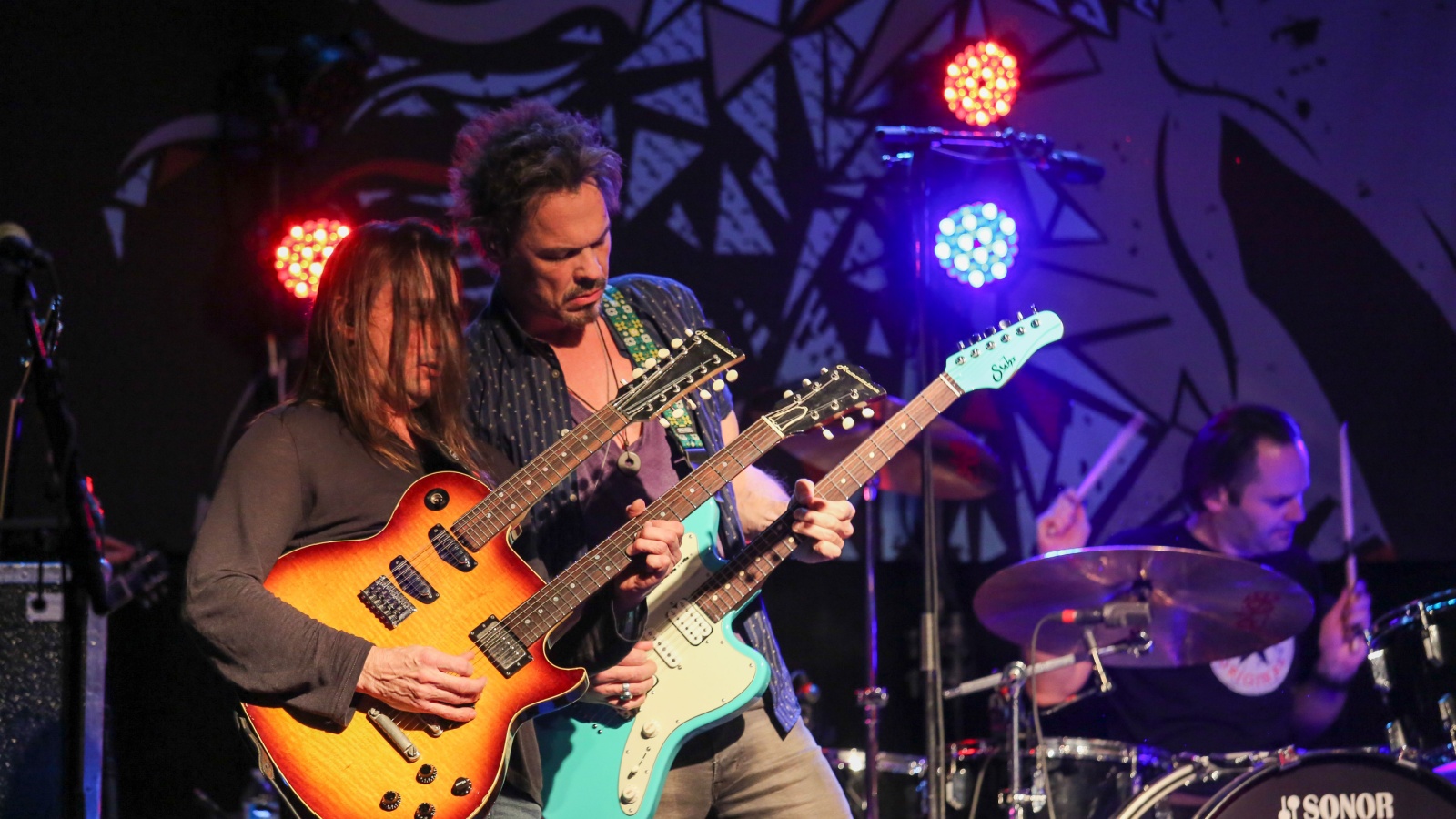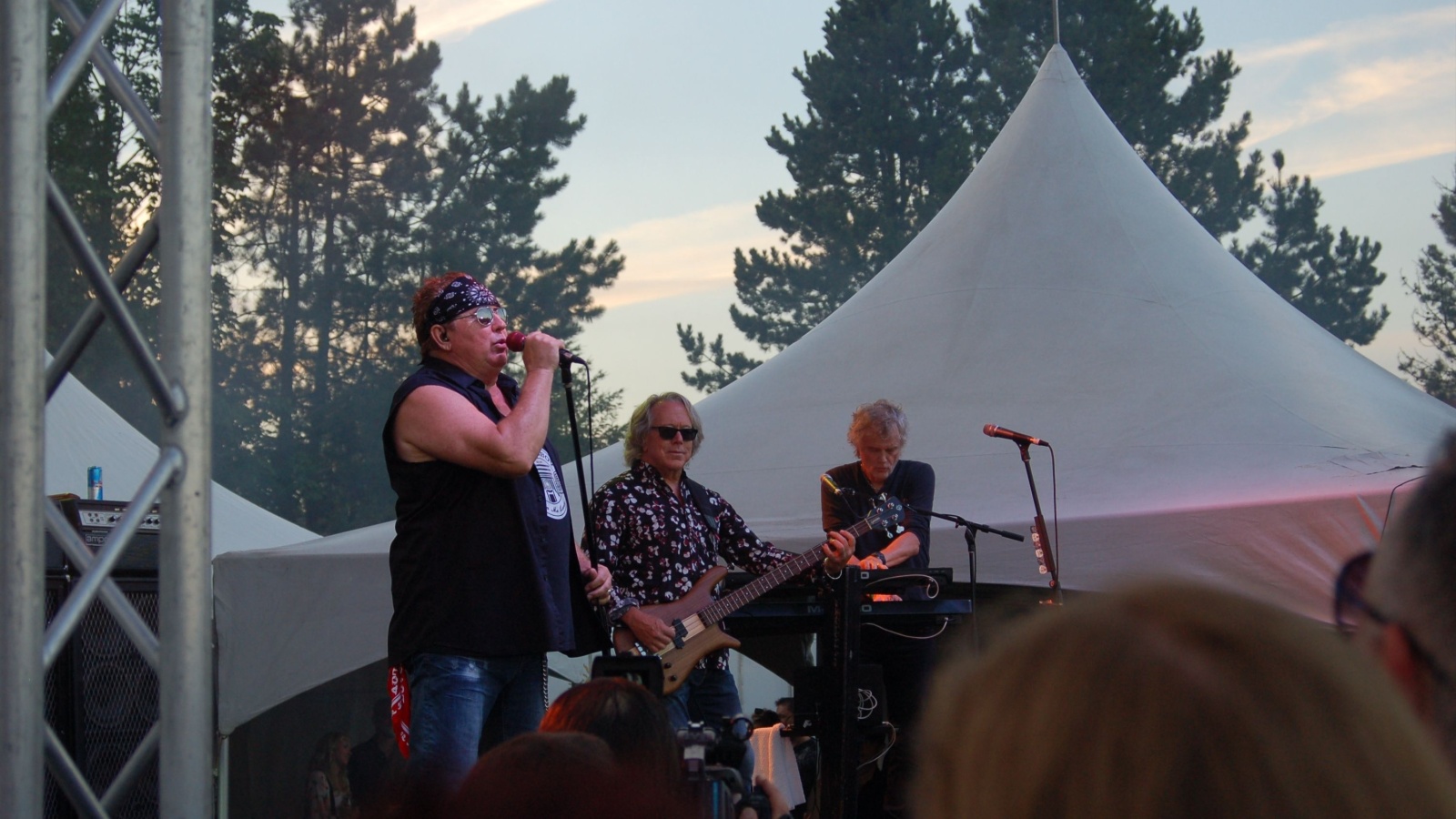Canada has produced some of the most talented and influential bands in music history — groups whose sound defined generations and shaped the country’s cultural identity. Yet, many of these bands disbanded far too early, leaving fans wondering what might have been. From groundbreaking rock acts to soulful folk collectives, these Canadian musicians created timeless music before parting ways at their creative peak. Here are 18 Canadian bands that broke up too soon.
The Tragically Hip

The Tragically Hip became a defining voice of Canadian rock, blending poetic storytelling with a uniquely national identity. Led by the late Gord Downie, the band captured everyday Canadian experiences with songs like “Bobcaygeon” and “Ahead by a Century.” Their farewell tour in 2016, following Downie’s cancer diagnosis, was an emotional national event watched by millions. Though they ended their journey on a poignant note, The Hip’s influence continues to echo through generations of musicians who celebrate their authenticity and connection to Canadian life. Their breakup marked the end of an era in Canadian music history.
Sloan

Sloan emerged from Halifax’s vibrant 1990s alternative scene and quickly gained attention for their melodic hooks and shared songwriting approach. Each member contributed distinct sounds and perspectives, creating timeless albums like Twice Removed and One Chord to Another. Despite their success, internal pressures and shifting music trends challenged their unity. Although they’ve reunited occasionally, Sloan’s prime lineup symbolized a rare balance of creativity and democracy within a rock band. Their early work remains beloved by fans who admire their knack for catchy, intelligent pop-rock that reflected both Canadian modesty and confidence.
The Weakerthans

The Weakerthans earned a loyal following with their introspective lyrics and poetic storytelling rooted in Winnipeg’s working-class charm. Led by former Propagandhi guitarist John K. Samson, the band’s gentle blend of indie rock and folk captured themes of isolation, love, and resilience. Albums like Reconstruction Site and Left and Leaving made them a critical darling, even as mainstream fame eluded them. When they quietly disbanded in 2015, fans mourned the loss of one of Canada’s most literate and emotionally resonant bands. Their songs continue to resonate for listeners who value honesty and heart over hype.
Alexisonfire

Alexisonfire redefined Canada’s post-hardcore scene with explosive energy, dual vocals, and emotional intensity. Formed in St. Catharines, Ontario, they rose to prominence with hits like “This Could Be Anywhere in the World.” Their mix of aggression and melody set them apart internationally. Despite success, creative differences and the rise of Dallas Green’s solo project City and Colour led to their 2011 breakup. The band later reunited, but fans still recall their early years as groundbreaking for Canadian heavy music. Alexisonfire’s legacy lies in proving that raw emotion and artistry can coexist within chaos.
April Wine

April Wine dominated Canadian rock in the 1970s and 1980s with their mix of hard rock and power ballads. Known for classics like “Just Between You and Me” and “Sign of the Gypsy Queen,” they helped define the sound of Canadian FM radio. Constant touring, internal changes, and shifting trends led to their initial breakup in the mid-1980s. Though they reunited later, their early era remains their most iconic. April Wine’s influence paved the way for countless Canadian rock bands, showing that homegrown talent could achieve both national fame and international respect.
Billy Talent

Billy Talent burst out of Mississauga’s punk scene with an electrifying sound that fused aggression and melody. Their self-titled debut in 2003 produced hits like “Try Honesty” and “River Below,” earning them a devoted following across Canada and abroad. Despite evolving musically and enduring lineup shifts, their early chemistry remains unmatched. While the band never officially disbanded, long hiatuses and side projects have led many to view their early era as their creative peak. Billy Talent’s influence on Canadian punk and alternative music continues to inspire new generations of politically aware and passionate artists.
Harmonium

Harmonium remains one of Quebec’s most cherished progressive rock bands, blending poetic French lyrics with intricate melodies and folk-inspired arrangements. Emerging in the 1970s, their albums Si on avait besoin d’une cinquième saison and L’Heptade are still celebrated as masterpieces of Québécois music. Despite critical acclaim, the band dissolved at their creative height, leaving behind a small but timeless discography. Their breakup was a loss for fans of thoughtful, artistic music that transcended language barriers. Harmonium’s legacy endures as a symbol of artistic purity and the golden age of Canadian progressive rock.
Death from Above 1979

Death from Above 1979 shook the Canadian rock scene with their raw, bass-driven sound and punk energy. The Toronto duo, consisting of Jesse F. Keeler and Sebastien Grainger, broke through with their 2004 debut You’re a Woman, I’m a Machine, becoming international icons of dance-punk. However, creative tension and exhaustion led to an early split in 2006. Their reunion years later reignited interest, but fans still view their original run as lightning in a bottle. Death from Above 1979 proved that two musicians could create a sound big enough to dominate both indie and mainstream rock.
Our Lady Peace (Original Lineup)

Our Lady Peace became one of Canada’s defining alternative rock bands of the 1990s, with their original lineup delivering introspective hits like “Clumsy” and “Superman’s Dead.” Frontman Raine Maida’s distinctive voice and the band’s atmospheric sound struck a chord with audiences seeking depth in their music. However, lineup changes in the early 2000s altered their chemistry, and fans often recall the original four as the heart of OLP’s magic. The early years captured a raw, emotional connection that newer material hasn’t fully replicated, making their initial era one of Canada’s most nostalgic rock memories.
The Rankin Family

The Rankin Family from Cape Breton, Nova Scotia, brought Celtic folk and traditional East Coast sounds to mainstream Canada. Their harmonies, heartfelt storytelling, and connection to Maritime culture earned them Juno Awards and widespread admiration in the 1990s. Songs like “Fare Thee Well Love” and “The Mull River Shuffle” became cultural touchstones. Despite their success, the group disbanded in 1999 to focus on solo pursuits and family life. While they reunited briefly, their original run remains special for its authenticity and emotional warmth. The Rankins helped preserve and celebrate Canada’s Celtic folk heritage for a new generation.
Crash Test Dummies

Crash Test Dummies blended alternative rock with quirky lyrics and baritone vocals from Brad Roberts, achieving massive success with “Mmm Mmm Mmm Mmm” in the 1990s. The Winnipeg band’s unique sound and witty storytelling set them apart from their peers. As musical trends shifted, they struggled to sustain commercial momentum, and lineup changes led to their quiet fade from the spotlight. Despite this, their influence on Canadian alternative music remains undeniable. Their mix of humour, intellect, and sincerity captured a distinct moment in 1990s rock history that fans continue to cherish.
The Guess Who (Classic Lineup)

The Guess Who’s classic lineup, led by Burton Cummings and Randy Bachman, defined an entire generation of Canadian rock. With hits like “American Woman,” “These Eyes,” and “No Time,” they were the first Canadian band to achieve major success on the U.S. charts. Internal conflicts and creative differences led to their 1970 breakup, ending a golden era of rock dominance. While various reunions followed, the original chemistry between Bachman and Cummings remains unmatched. The Guess Who’s legacy continues to influence artists around the world, proving Canadian bands could stand toe-to-toe with global icons.
Tegan and Sara (Hiatus Years)

Twin sisters Tegan and Sara became icons of Canadian indie pop, known for their heartfelt lyrics and evolution from acoustic folk to synth-driven pop. With albums like The Con and Heartthrob, they achieved international acclaim. Their brief hiatus years saw them explore solo and creative projects, leaving fans nostalgic for their early harmonies and emotionally rich songwriting. Though they eventually reunited, that pause reminded listeners of how much their bond and shared artistry meant to Canadian music. Tegan and Sara’s legacy continues to grow, showing the strength of reinvention and collaboration.
I Mother Earth

I Mother Earth brought a fusion of hard rock, funk, and psychedelia to Canada’s 1990s music scene. Their debut album Dig earned them a Juno Award and a loyal fan base drawn to their technical musicianship and energetic performances. Vocalist Edwin’s departure in 1997 marked the beginning of internal shifts that the band never fully recovered from. Although they regrouped later with new members, their early sound remains a benchmark of 1990s Canadian alternative rock. I Mother Earth’s early breakup left fans wondering how much higher they could have climbed with their original creative spark intact.
The Watchmen

The Watchmen emerged from Winnipeg in the early 1990s, delivering anthemic alternative rock that resonated deeply with Canadian audiences. Known for hits like “Stereo” and “Any Day Now,” the band’s blend of introspective lyrics and powerful live performances earned them a dedicated following. Despite critical and commercial success, internal pressures and the changing music landscape led to their disbandment in the early 2000s. Occasional reunions have reminded fans of their strong stage chemistry, but their original run remains the band’s golden era. The Watchmen’s thoughtful songwriting continues to influence Canada’s alternative rock scene.
Big Wreck (Original Breakup Before Reunion)

Big Wreck, fronted by Ian Thornley, exploded onto the rock scene in the late 1990s with their debut album In Loving Memory Of… and hits like “The Oaf.” Their musicianship, complex arrangements, and emotionally charged lyrics made them stand out in a grunge-saturated era. Despite success, creative and industry pressures led to their breakup in 2002. Thornley went solo before reuniting the band a decade later, proving their sound had enduring appeal. The original split, however, cut short a group that could have reached even greater heights. Their comeback only reinforced their reputation for excellence.
The New Pornographers (Early Disbandment Period)

The New Pornographers blended indie rock with pop sophistication, uniting powerhouse talents like Neko Case, A.C. Newman, and Dan Bejar. Their early albums, including Mass Romantic and Electric Version, defined Canadian indie music in the early 2000s. The group’s temporary pauses and shifting member focus led to speculation about a split, creating a period of uncertainty for fans. Even during that lull, their influence remained strong, inspiring countless indie artists across North America. Though they later regrouped, their early collaborative energy remains the defining spark of their legacy in Canada’s vibrant music scene.
Loverboy (Original Split in the Late 1980s)

Loverboy dominated the 1980s with arena-rock hits like “Working for the Weekend” and “Turn Me Loose,” becoming one of Canada’s biggest musical exports. Their energetic performances and signature red leather pants symbolized an era of rock confidence. Internal tensions and industry burnout, however, led to their split in 1988 at the height of their fame. While reunions followed, the original lineup’s chemistry captured something uniquely electrifying. Loverboy’s early breakup left fans nostalgic for the peak years when Canadian rock ruled international airwaves. Their songs remain timeless anthems of ambition, freedom, and fun.
21 Products Canadians Should Stockpile Before Tariffs Hit

If trade tensions escalate between Canada and the U.S., everyday essentials can suddenly disappear or skyrocket in price. Products like pantry basics and tech must-haves that depend on are deeply tied to cross-border supply chains and are likely to face various kinds of disruptions
21 Products Canadians Should Stockpile Before Tariffs Hit
